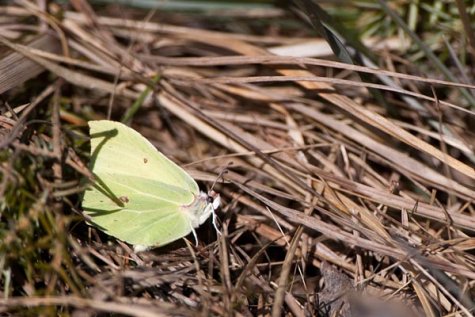The sun moves ever higher
Photo: Arne Ader
Translation: Liis
Brimstone butterfly
Brimstone Lapsuliblikas Gonepteryx rhamni
The powerful sun brightens the withered grey landscape with brimstone butterflies in warmer spots. We meet the imagos from last summer’s latter half ever more often. During winter the brimstones were protected by the glycerine, sorbitole and proteins stored in the organisms; with such reserves survival even of periods of twenty degrees of cold is assured.
The heralds of a golden summer generally come a little later in early spring than the small tortoiseshells. The brimstones hibernate in moss or withered matter on the forest floor; that warms up later than the wintering places of the tortoiseshells near human settlements. The brimstone is more of a forest species and it does not particularly appreciate bare open landscapes. We meet them in cities too in the spring, suitable wintering spots can be found there also.
It is easy to distinguish the sexes of the brimstone – the males are lemon yellow and the females paler, greenish-white. The forewings have sharp points, a red patch on each wing and lighter-coloured veins. The wing span is five to six centimetres. Brimstones always close their wings on landing and then too the female is recognisable by her lighter colour.
In April we can see their mating flight where the male follows the female. A little later the female lays her eggs on alder buckthorn (Frangula alnus) or buckthorn (Rhamnus cathartica) that are foraging plants for the brimstone’s caterpillars. In May we can check whether the about three centimetres long green butterfly caterpillars are already on the move on the shrub-like trees mentioned above.









